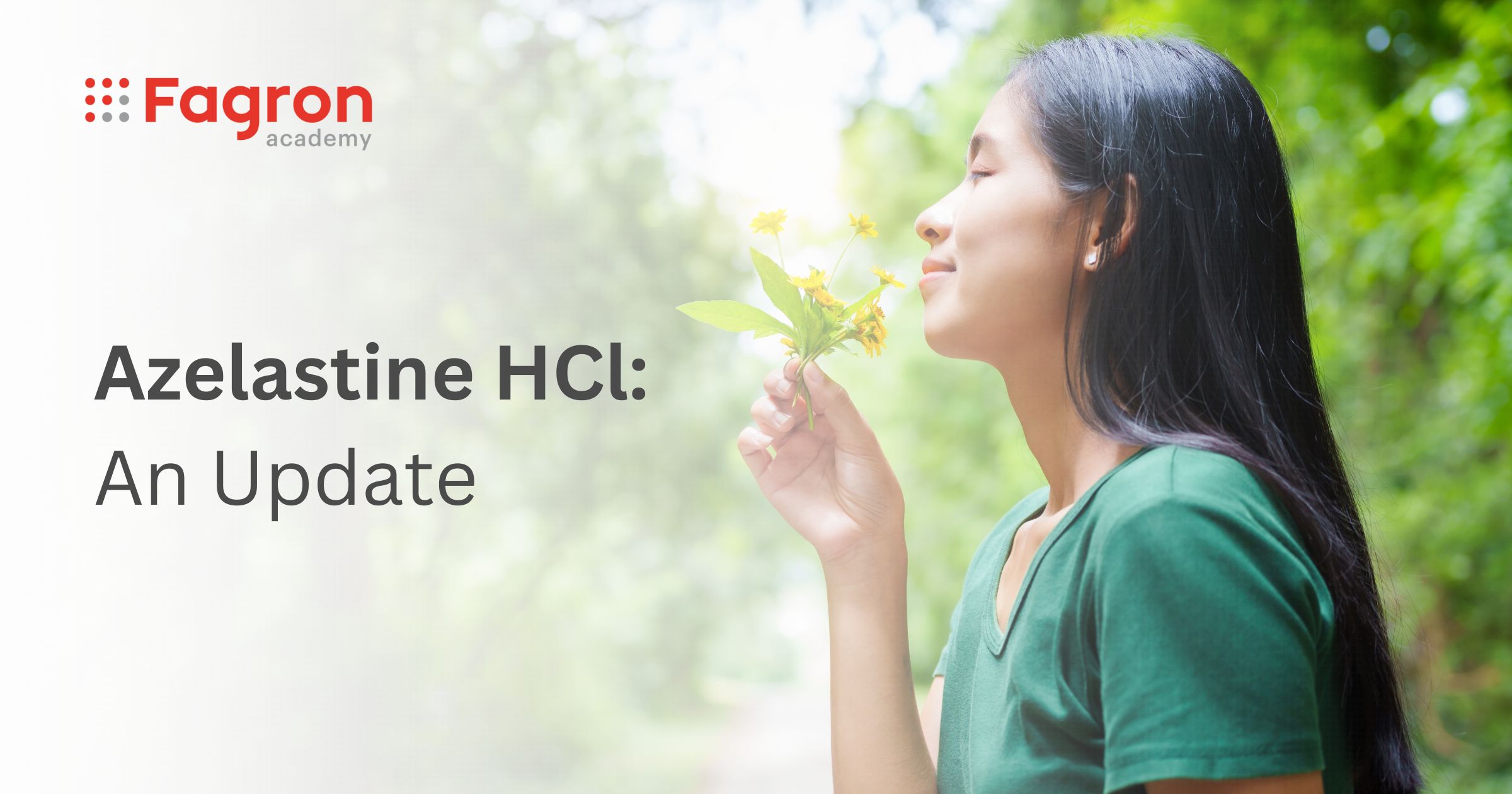
Rosacea is a chronic inflammatory skin disorder that presents as four main types; erythematotelangiectic, papulopustular, phymatous, and ocular rosacea.1 The most common manifestation is erythematolangiectatic rosacea, which presents in approximately 57% of patients with rosacea, and papulopustular rosacea, which presents in approximately 43% of patients with rosacea. The phymatous and ocular subtypes are less common.2 The most common subtype of rosacea, erythematotelangiectic is commonly characterized by erythema and telangiectasia. Facial erythema, or redness may be managed with the use of topical vasoconstrictors such as brimonidine or oxymetazoline.3 Currently, oxymetazoline and brimonidine are the only two active pharmaceutical ingredients (APIs) approved for the management of persistent facial erythema associated with rosacea.4 Though rosacea manifests in a variety of ways, erythema is a major concern for many patients suffering from rosacea. One survey of 708 respondents with rosacea found that nearly all patients with moderate or severe erythema categorized this as their more bothersome symptom.5 In this blog post, we’ll review oxymetazoline and brimonidine for the management of rosacea induced erythema as well as combination therapies with vasoconstrictors.
Oxymetazoline vs Brimonidine for Management of Persistent Facial Erythema
Oxymetazoline is an alpha-1a adrenoceptor agonist that causes topical vasoconstriction to lessen erythema associated with rosacea.6 Brimonidine is also a vasoconstrictor, though, it works through selective alpha-2 adrenergic agonism to exert it’s vasoconstricting effect.7 Brimonidine has a rapid onset within 30 minutes and begins to wear off at 10 to 12 hours at which point some patients report the return of erythema. Oxymetazoline has a more gradual onset, one review in the Journal for Drugs in Dermatology reported that the return of erythema is less common in patients using oxymetazoline as compared to brimonidine.5 Overtime, 10 to 20% of patients treated with commercially available brimonidine gel noted paradoxical erythema, this adverse effect was noted to be significantly less likely with the oxymetazoline topical treatment group, of which 1% of patients noted application site erythema as compared to 0.4% in the placebo group.7
Combination Therapy for the Management of Rosacea
Oxymetazoline and brimonidine have demonstrated efficacy for the management of erythema associated with rosacea. However, in addition to erythema, patients may also present with papules, pustules and other dermatologic manifestations. For management of symptoms other than erythema, concomitant treatment must be considered.8 Agents for the management of inflammation or papules and pustules including metronidazole, azelaic acid, and ivermectin are sometimes used in conjunction with oxymetazoline or brimonidine for the management of rosacea symptoms.9 Despite the frequent need for combination therapy, at this time few randomized controlled trials exist on combination options for rosacea. One vehicle-controlled study of combination brimonidine 0.33% gel with ivermectin 1% cream over a period of 12 weeks found that the combination treatment was significantly statistically superior to placebo and statistically significant to regimens that used brimonidine for a shorter period of time in conjunction with ivermectin.10
In addition to use with other topical pharmacological agents, oxymetazoline has been studied in combination with device therapy for rosacea. Oxymetazoline has also been noted to improve outcomes and reduce diffuse facial erythema in combination with intense pulsed light (IPL).10 For those patients presenting with several manifestations of rosacea, combination therapy with vasoconstrictors and agents for the management of inflammation and pustules or papules may allow us to control multiple symptoms without the need to apply several different products.
Compounding with Vasoconstrictors
When compounding combination therapies, physical and chemical characteristics of each API must be considered. With regards to dosing, oxymetazoline HCl is dosed on the basis of the HCl salt and brimonidine tartrate is dosed on the basis of brimonidine rather than the tartrate salt.6,7 Both APIs have pH stability in the slightly acidic range and have aqueous solubility, though, brimonidine tartrate has pH related solubility, with increasing solubility at acidic pH.6, 11,12 Oxymetazoline HCl has demonstrated physical compatibility with Versatile and Nourivan Antiox at up to 2% and compatibility with Cleoderm at up to 1%. For further questions on compounding with oxymetazoline and brimonidine, reach out to the FACTS team at FACTS.Support@Fagronacademy.us.
References:
1. Rainer BM, Kang S, Chien AL. Rosacea: Epidemiology, pathogenesis, and treatment. Dermatoendocrinol. 2017;9(1):e1361574. Published 2017 Oct 4. doi:10.1080/19381980.2017.1361574
2. Barakji YA, Rønnstad ATM, Christensen MO, et al. Assessment of Frequency of Rosacea Subtypes in Patients With Rosacea: A Systematic Review and Meta-analysis. JAMA Dermatol. 2022;158(6):617-625. doi:10.1001/jamadermatol.2022.0526
3. Micali G, Gerber PA, Lacarrubba F, Schäfer G. Improving Treatment of Erythematotelangiectatic Rosacea with Laser and/or Topical Therapy Through Enhanced Discrimination of its Clinical Features. J Clin Aesthet Dermatol. 2016;9(7):30-39.
4. Okwundu N, Cline A, Feldman SR. Difference in vasoconstrictors: oxymetazoline vs. brimonidine. J Dermatolog Treat. 2021;32(2):137-143. doi:10.1080/09546634.2019.1639606
5. Gallo R, Baldwin H, Gold L, Harper J. Update on facial erythema in rosacea. Journal of Drugs in Dermatology. 2021; 20(8).
6. Oxymetazoline Hydrochloride [package insert] Taro Pharmaceuticals. Hawthorne, NY. 2021.
7. Brimonidine Tartrate [package insert] Galderma Laboratories. Dallas, Tx. 2022.
8. Stocum L. Using combination therapies and avoiding subtypes for rosacea. Dermatology times. 2021; 42(11): 32.
9. Del Rosso JQ, Tanghetti E, Webster G, Stein Gold L, Thiboutot D, Gallo RL. Update on the Management of Rosacea from the American Acne & Rosacea Society (AARS). J Clin Aesthet Dermatol. 2019;12(6):17-24.
10. Del Rosso JQ, Tanghetti E. Topical Oxymetazoline Hydrochloride Cream 1% for the Treatment of Persistent Facial Erythema of Rosacea in Adults: A Comprehensive Review of Current Evidence. J Clin Aesthet Dermatol. 2021;14(3):32-37.
11. Brimonidine Tartrate [package insert] Akorn. Gurnee, IL. 2022.
12. Bhagav P, Deshpande P, Pandey S, Chandran S. Development and validation of stability indicating UV spectrophotometric method for the estimation of brimonidine tartrate in pure form, formulations and preformulation studies. Der Pharmacie Lettre. 2010; 2(3).



